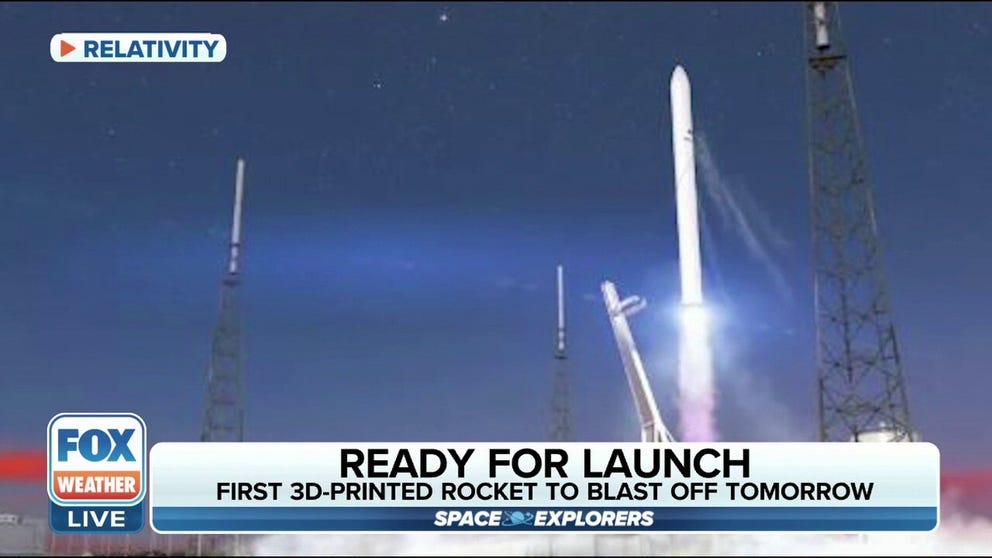Launch of world's first 3D-printed rocket from Florida's Space Coast scrubbed
NASA says Terran 1 is the largest 3D-printed object to exist and to attempt orbital flight. It is a two-stage rocket standing 110 feet tall and 7.5 foot wide and is currently 85% 3D printed.
First 3D-printed rocket expected to launch Wednesday
The first-ever 3D-printed rocket is set to launch tomorrow from the Cape Canaveral Space Force Station in Florida.
CAPE CANAVERAL, Fla. - Space fans will have to wait to see the launch of the world's first 3D-printed rocket from Florida's Space Coast.
Relativity Space geared up to launch the one-of-a-kind rocket known as Terran 1 – from Cape Canaveral Space Force Station on Wednesday afternoon, but officials ultimately decided to scrub it, despite the weather being 90% favorable for liftoff.
A backup opportunity was not immediately announced.
The launch, also known as the "Good Luck Have Fun" Mission, is the first orbital attempt for Terran 1. It’s a big deal in the aerospace world because it takes a simplified and reusable approach to rocket launches.
The launch, also known as the "Good Luck Have Fun" Mission, is the first orbital attempt for Terran 1.
A rocket normally takes two years or more to build, but this can be done in two months.
"Terran 1 is the largest 3D printed object to exist and to attempt orbital flight. It is a two-stage rocket standing 110 feet tall and 7.5 feet wide and is currently 85% 3D printed," according to the Kennedy Space Center. "Relativity engines are entirely 3D printed and use liquid oxygen and liquid natural gas."
About 85-percent of it is 3D-printed and uses liquid oxygen and liquid natural gas, which scientists say is not only best for rocket propulsion, but also for reusability. Looking ahead, it would be the easiest to transition to methane found on Mars eventually.
WATCH OUT FOR THESE ASTRONOMICAL EVENTS IN 2023
In December, FOX 35 spoke with Patrick Svatek of Relativity Space about the first test launch.
"It has taken a while to get here. A lot of people across the company, a lot of contract and government support to get to this point, and it is super exciting. The energy here that you feel today, the last few days, is incredible."
Compared to a traditional rocket that has more than 100,000 parts, this 3D-printed rocket has less than 1,000 parts. There is no payload on board this rocket right now.
The rocket's launch will be a learning experience and may require some tweaking down the road, but is set to make history as it attempts its first orbital flight.
